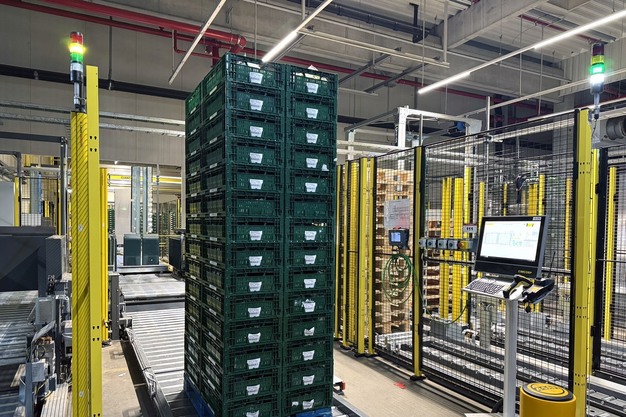The cost of automation depends on warehouse size, processes, level of automation, and existing infrastructure. While the initial capital expenditure (CAPEX) can appear high, it is only part of the equation. A clear understanding of ROI shows a broader value: automation increases output, reduces labor dependency, improves picking accuracy, and enhances product quality through advanced checks.
 © Cimcorp
© Cimcorp
Beyond these operational gains, many businesses also see fewer order errors, lower return rates, and higher customer satisfaction. These benefits directly impact the bottom line but also support brand strength and market share over time.
Reducing costs matters, but the real value lies in building more intelligent, resilient operations. Automation allows companies to plan ahead with confidence and reduce the disruptions that come with manual work.
 © Cimcorp
© Cimcorp
"As labor shortages, especially during peak demand, can lead to empty shelves, lost sales, and frustrated customers, automation isn't about ROI alone. It's about survival and smart growth. Automation helps businesses stay ready and relevant," said Riku Puska.
While ROI varies, companies typically see returns within 4 to 14 years, depending on project scope and priorities. Larger systems often yield stronger efficiencies but require higher upfront investment, while smaller setups are easier to start but may take longer to pay back.
Automation does not need to be an all-or-nothing investment. Modular solutions allow businesses to begin with smaller systems and expand over time. "A smaller system can be a smart starting point, especially if it's designed to scale. You get early results and a long-term plan in one," said Mikko Kumpulainen, Warehouse & Distribution Industry Sales Manager.
 © Cimcorp
© Cimcorp
A strong business case is the starting point for any project. The process begins by identifying where time, labor, or accuracy is being lost. Clear baselines and measurable outcomes, such as faster order processing or fewer picking mistakes, help justify the investment.
Operational costs (OPEX) are also central to ROI. Automated systems may require higher upfront investment but offer substantial OPEX savings, particularly in fresh food warehousing. Automation reduces labor costs, optimizes cold storage, increases throughput, improves accuracy, minimizes product waste, and supports inventory management and traceability.
 © Cimcorp
© Cimcorp
"At Cimcorp, we work closely with customers to define what success looks like and how to reach it step by step," said Mikko Kumpulainen.
"When guided by clear goals and the right expertise, automation becomes a long-term strategic advantage. For those who start smartly, build a strong business case and partner with the right experts, automation lays the foundation for a more resilient and competitive future," concluded Riku Puska.
 © CimcorpFor more information:
© CimcorpFor more information:
Maarit Leppäaho
Cimcorp Group
Tel: +358 10 2772 000
Email: [email protected]
www.cimcorp.com
